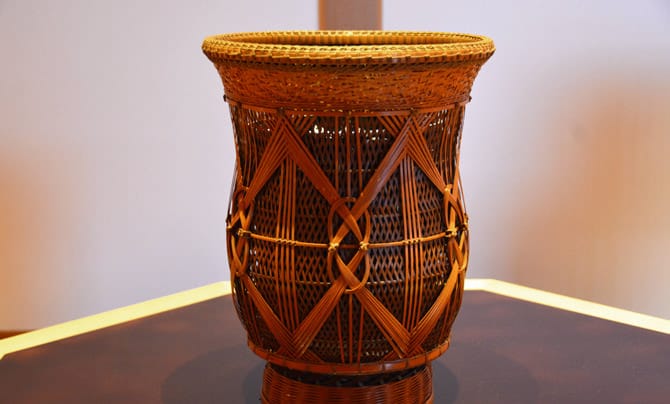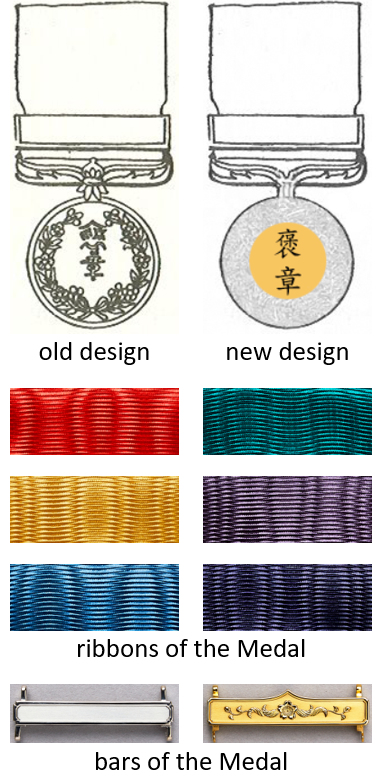|
Akihiro Maeta
(from Tottori, Japan, born May 1, 1954) is a Japanese ceramic artist known for white porcelain. He is a Living National Treasure of Japan and a member of the Japan Kōgei Association. Maeta's style is achieved by hand-forming his works as opposed to forming them on a potter's wheel. He uses his fingers, palms, and a blade to perfect the shape of his white porcelain sculptures. Awards and recognition As a result of his work with ceramics, Maeta has won numerous awards including the Ceramic Society of Japan award in 2003. He is also acknowledged as a holder of important intangible cultural property for his work with white porcelain. In 2007, he was awarded a Medal of Honour with purple ribbon by the government of Japan. In 2013, he was recognized as a Living National Treasure of Japan. Collections containing work * British Museum, London, United Kingdom * Tottori Prefectural Museum The is a prefectural museum located in Tottori, Japan, dedicated to the nature, history ... [...More Info...] [...Related Items...] OR: [Wikipedia] [Google] [Baidu] |
Tottori Prefecture
is a prefecture of Japan located in the Chūgoku region of Honshu. Tottori Prefecture is the least populous prefecture of Japan at 570,569 (2016) and has a geographic area of . Tottori Prefecture borders Shimane Prefecture to the west, Hiroshima Prefecture to the southwest, Okayama Prefecture to the south, and Hyōgo Prefecture to the east. Tottori is the capital and largest city of Tottori Prefecture, with other major cities including Yonago, Kurayoshi, and Sakaiminato. Tottori Prefecture is home to the Tottori Sand Dunes, the largest sand dunes system in Japan, and Mount Daisen, the highest peak in the Chūgoku Mountains. Etymology The word "Tottori" in Japanese is formed from two ''kanji'' characters. The first, , means "bird" and the second, means "to get". Early residents in the area made their living catching the region's plentiful waterfowl. The name first appears in the Nihon shoki in the 23rd year of the Emperor Suinin (213 AD) when Yukuha Tana, an elder from the ... [...More Info...] [...Related Items...] OR: [Wikipedia] [Google] [Baidu] |
Osaka University Of Arts
is a private arts university located in Kanan, Osaka, Kanan, Minamikawachi District, Osaka, Minamikawachi District, Osaka Prefecture, Japan. The university was founded in 1945 as , changing its name to in 1957, and then to in 1964. The university adopted the current name in 1966. Notable teachers *Toshiyuki Hosokawa *Takeji Iwamiya *Kazuo Koike *Sadao Nakajima *Kazuki Ōmori *Go Nagai *Teruaki Georges Sumioka, Full Professor of Philosophy Notable students *Takami Akai, illustrator *Hideaki Anno, animation and film director *Kiyohiko Azuma, manga author and illustrator *Arata Furuta, actor *Satoshi Hashimoto, voice actor *Tenpei Nakamura, pianist *Katsunori Ozaki, pianist *Kenjiro Hata, manga artist *Toshio Kakei, actor *Koji Kanemoto *Shinichiro Kimura, anime director *Toshiyuki Kita, furniture designer *Takashi Tezuka, video game designer at ''Nintendo'' *Yoshiaki Koizumi, video game designer at ''Nintendo'' *Koji Kondo, video game composer at ''Nintendo'' *Kenji Yamamoto (co ... [...More Info...] [...Related Items...] OR: [Wikipedia] [Google] [Baidu] |
Tottori, Japan
is a prefecture of Japan located in the Chūgoku region of Honshu. Tottori Prefecture is the least populous prefecture of Japan at 570,569 (2016) and has a geographic area of . Tottori Prefecture borders Shimane Prefecture to the west, Hiroshima Prefecture to the southwest, Okayama Prefecture to the south, and Hyōgo Prefecture to the east. Tottori is the capital and largest city of Tottori Prefecture, with other major cities including Yonago, Kurayoshi, and Sakaiminato. Tottori Prefecture is home to the Tottori Sand Dunes, the largest sand dunes system in Japan, and Mount Daisen, the highest peak in the Chūgoku Mountains. Etymology The word "Tottori" in Japanese is formed from two ''kanji'' characters. The first, , means "bird" and the second, means "to get". Early residents in the area made their living catching the region's plentiful waterfowl. The name first appears in the Nihon shoki in the 23rd year of the Emperor Suinin (213 AD) when Yukuha Tana, an elder from the ... [...More Info...] [...Related Items...] OR: [Wikipedia] [Google] [Baidu] |
Ceramic
A ceramic is any of the various hard, brittle, heat-resistant and corrosion-resistant materials made by shaping and then firing an inorganic, nonmetallic material, such as clay, at a high temperature. Common examples are earthenware, porcelain, and brick. The earliest ceramics made by humans were pottery objects (''pots,'' ''vessels or vases'') or figurines made from clay, either by itself or mixed with other materials like silica, hardened and sintered in fire. Later, ceramics were glazed and fired to create smooth, colored surfaces, decreasing porosity through the use of glassy, amorphous ceramic coatings on top of the crystalline ceramic substrates. Ceramics now include domestic, industrial and building products, as well as a wide range of materials developed for use in advanced ceramic engineering, such as in semiconductors. The word "'' ceramic''" comes from the Greek word (), "of pottery" or "for pottery", from (), "potter's clay, tile, pottery". The earliest kno ... [...More Info...] [...Related Items...] OR: [Wikipedia] [Google] [Baidu] |
Living National Treasure (Japan)
is a Japanese popular term for those individuals certified as by the Minister of Education, Culture, Sports, Science and Technology as based on Japan's . The term "Living National Treasure" is not formally mentioned in the law, but is an informal term referencing the cultural properties designated as the National Treasures. The Japanese government provides a subsidy of 2 million yen per person per year for Living National Treasures. The total amount of the subsidy is determined by the national budget, and since 2002 it has been 232 million yen. Therefore, the number of Living National Treasures in existence is a maximum of 116, and if there are 116 Living National Treasures, no person with any outstanding skills will be newly designated as a Living National Treasure unless a vacancy occurs due to death. [...More Info...] [...Related Items...] OR: [Wikipedia] [Google] [Baidu] |
Japan Kōgei Association
The Japan Kōgei Association (日本工芸会) is a non-profit association dedicated to the protection and development of intangible cultural heritage, traditional Japanese crafts and supporting artisans such as Living National Treasures. The organisation has nine branches across Japan. Each branch has its own study groups and provides training sessions. It holds a group exhibition annually. It had around 1,300 members as of 2016. The organisation works to develop and improve traditional craft and skill techniques. It works with the government of Japan. Traditional crafts are divided into seven groups: * Japanese ceramics * Japanese textiles * Japanese lacquerware * Japanese metalwork * Japanese woodworking and Japanese bambooworking * Japanese dolls * other crafts such as ''washi is traditional Japanese paper. The term is used to describe paper that uses local fiber, processed by hand and made in the traditional manner. ''Washi'' is made using fibers from the inner ... [...More Info...] [...Related Items...] OR: [Wikipedia] [Google] [Baidu] |
Intangible Cultural Property (Japan)
An , as defined by the Japanese government's Law for the Protection of Cultural Properties (1950), is a part of the Cultural Properties of high historical or artistic value such as drama, music, and craft techniques. The term refers exclusively to human skills possessed by individuals or groups which are indispensable to produce Cultural Properties. Items of particular importance can be designated as . Recognition is also given to the owners of an item to encourage its transmission. There are three types of recognition: individual recognition, collective recognition, and group recognition. Special grants of two million yen a year are given to individual holders (the so-called Living National Treasures) to help protect their properties. The government also contributes part of the expenses incurred either by the holder of an Intangible Cultural Property during training of his successor, or by a recognized group for public performances. To promote the understanding, and therefore th ... [...More Info...] [...Related Items...] OR: [Wikipedia] [Google] [Baidu] |
Medals Of Honour (Japan)
are medals awarded by the Government of Japan. They are awarded to individuals who have done meritorious deeds and also to those who have achieved excellence in their field of work. The Medals of Honor were established on December 7, 1881, and were first awarded the following year. Several expansions and amendments have been made since then. The medal design for all six types are the same, bearing the stylized characters on a Gilding, gilt central disc surrounded by a silver ring of cherry blossoms on the obverse; only the colors of the ribbon differ. If for some reason an individual were to receive a second medal of the same ribbon colour, then a second medal is not issued but rather a new bar is added to their current medal. The Medals of Honor are awarded twice each year, on April 29 (the birthday of the Shōwa Emperor) and November 3 (the birthday of the Meiji Emperor). Types Red ribbon First awarded in 1882. Awarded to individuals who have risked their own lives to save t ... [...More Info...] [...Related Items...] OR: [Wikipedia] [Google] [Baidu] |
Government Of Japan
The Government of Japan consists of legislative, executive and judiciary branches and is based on popular sovereignty. The Government runs under the framework established by the Constitution of Japan, adopted in 1947. It is a unitary state, containing forty-seven administrative divisions, with the Emperor as its Head of State. His role is ceremonial and he has no powers related to Government. Instead, it is the Cabinet, comprising the Ministers of State and the Prime Minister, that directs and controls the Government and the civil service. The Cabinet has the executive power and is formed by the Prime Minister, who is the Head of Government. The Prime Minister is nominated by the National Diet and appointed to office by the Emperor. The National Diet is the legislature, the organ of the Legislative branch. It is bicameral, consisting of two houses with the House of Councilors being the upper house, and the House of Representatives being the lower house. Its members are direc ... [...More Info...] [...Related Items...] OR: [Wikipedia] [Google] [Baidu] |
British Museum
The British Museum is a public museum dedicated to human history, art and culture located in the Bloomsbury area of London. Its permanent collection of eight million works is among the largest and most comprehensive in existence. It documents the story of human culture from its beginnings to the present.Among the national museums in London, sculpture and decorative and applied art are in the Victoria and Albert Museum; the British Museum houses earlier art, non-Western art, prints and drawings. The National Gallery holds the national collection of Western European art to about 1900, while art of the 20th century on is at Tate Modern. Tate Britain holds British Art from 1500 onwards. Books, manuscripts and many works on paper are in the British Library. There are significant overlaps between the coverage of the various collections. The British Museum was the first public national museum to cover all fields of knowledge. The museum was established in 1753, largely b ... [...More Info...] [...Related Items...] OR: [Wikipedia] [Google] [Baidu] |
Tottori Prefectural Museum
The is a prefectural museum located in Tottori, Japan, dedicated to the nature, history, folklore, and art of Tottori Prefecture. Over three thousand items from the permanent collection are on display and the museum also stages temporary exhibitions. See also * Tottori City Historical Museum * Inaba Province * Hōki Province was an old province of Japan in the area that is today the western part of Tottori Prefecture. It was sometimes called . Hōki bordered on Inaba, Mimasaka, Bitchū, Bingo, and Izumo Provinces. The ancient capital was in the area that is ... References External links Tottori Prefectural MuseumTottori Prefectural Museum at Google Cultural Institute History museums in Japan Museums in Tottori Prefecture Buildings and structures in Tottori (city) Prefectural museums Museums established in 1972 1972 establishments in Japan {{Japan-museum-stub ... [...More Info...] [...Related Items...] OR: [Wikipedia] [Google] [Baidu] |






